Fran Baker's Blog, page 10
July 20, 2012
Friday, July 20, 1934
We ironed. It sure was hot! Rita Mae, Olive and Warren, Mr. Constable and Raymond and Mother and Daddy and I had fish at Joe's.
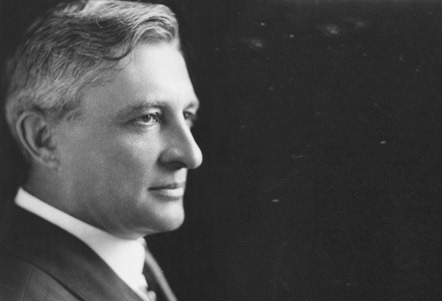 Willis Haviland Carrier (November 26, 1876 – October 6, 1950)
Willis Haviland Carrier (November 26, 1876 – October 6, 1950)
Carrier was an American engineer and inventor, most widely known as the man who invented modern air conditioning. In Buffalo, New York, on July 17, 1902, in response to a quality problem experienced at the Sackett-Wilhelms Lithographing & Publishing Company of Brooklyn, Willis Carrier submitted drawings for what became recognized as the world's first modern air conditioning system. The 1902 installation marked the birth of air conditioning because of the addition of humidity control, which led to the recognition by authorities in the field that air conditioning must perform four basic functions:
1.) control temperature; 2.) control humidity; 3.) control air circulation and ventilation; 4.) cleanse the air.
After several more years of refinement and field testing, on January 2, 1906, Carrier was granted U.S. patent No. 808897 on his invention, which he called an "Apparatus for Treating Air," the world's first spray-type air conditioning equipment. It was designed to humidify or dehumidify air, heating water for the first and cooling it for the second.
And the rest, as they say, is history . . .

 Willis Haviland Carrier (November 26, 1876 – October 6, 1950)
Willis Haviland Carrier (November 26, 1876 – October 6, 1950)Carrier was an American engineer and inventor, most widely known as the man who invented modern air conditioning. In Buffalo, New York, on July 17, 1902, in response to a quality problem experienced at the Sackett-Wilhelms Lithographing & Publishing Company of Brooklyn, Willis Carrier submitted drawings for what became recognized as the world's first modern air conditioning system. The 1902 installation marked the birth of air conditioning because of the addition of humidity control, which led to the recognition by authorities in the field that air conditioning must perform four basic functions:
1.) control temperature; 2.) control humidity; 3.) control air circulation and ventilation; 4.) cleanse the air.
After several more years of refinement and field testing, on January 2, 1906, Carrier was granted U.S. patent No. 808897 on his invention, which he called an "Apparatus for Treating Air," the world's first spray-type air conditioning equipment. It was designed to humidify or dehumidify air, heating water for the first and cooling it for the second.
And the rest, as they say, is history . . .
Published on July 20, 2012 04:45
July 19, 2012
Thursday, July 19, 1934
Washed clothes. Us girls went after the cows. Went down to Olive and Warren's. We played on the swings.
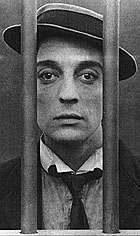 Buster Keaton (1895-1966)
Buster Keaton (1895-1966)
Born in Piqua, Kansas, Keaton was confined to a sanitarium in 1934 for
alcoholism. He escaped his straitjacket using a secret learned from the magician Harry Houdini. Keaton later gained control of his drinking.

 Buster Keaton (1895-1966)
Buster Keaton (1895-1966)Born in Piqua, Kansas, Keaton was confined to a sanitarium in 1934 for
alcoholism. He escaped his straitjacket using a secret learned from the magician Harry Houdini. Keaton later gained control of his drinking.
Published on July 19, 2012 04:45
July 18, 2012
Wednesday, July 18, 1933
Went over to get some water at Erickson's. Then we went down to Martin Johnson's. Toasted marshmallows.
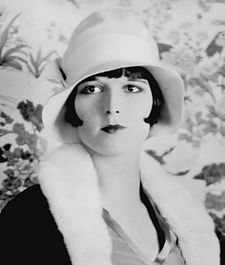 Mary Louise Brooks - AKA Louise Brooks
Mary Louise Brooks - AKA Louise Brooks
(November 14, 1906 – August 8, 1985)
Born in Wichita, Kansas, Brooks was an American dancer, model, showgirl and silent film actress, noted for popularizing the bobbed haircut. Brooks is best known as the lead in three feature films made in Europe, including two G. W. Pabst films: Pandora's Box (1929), Diary of a Lost Girl (1929), and Prix de Beauté (Miss Europe) (1930). She starred in 17 silent films and, late in life, authored a memoir, Lulu in Hollywood. A notorious spendthrift, she eked out a post-retirement living as a courtesan with a few select wealthy men as clients.
Brooks was found dead of a heart attack after suffering from arthritis and emphysema for many years. She was buried in Holy Sepulchre Cemetery in Rochester, New York.

 Mary Louise Brooks - AKA Louise Brooks
Mary Louise Brooks - AKA Louise Brooks(November 14, 1906 – August 8, 1985)
Born in Wichita, Kansas, Brooks was an American dancer, model, showgirl and silent film actress, noted for popularizing the bobbed haircut. Brooks is best known as the lead in three feature films made in Europe, including two G. W. Pabst films: Pandora's Box (1929), Diary of a Lost Girl (1929), and Prix de Beauté (Miss Europe) (1930). She starred in 17 silent films and, late in life, authored a memoir, Lulu in Hollywood. A notorious spendthrift, she eked out a post-retirement living as a courtesan with a few select wealthy men as clients.
Brooks was found dead of a heart attack after suffering from arthritis and emphysema for many years. She was buried in Holy Sepulchre Cemetery in Rochester, New York.
Published on July 18, 2012 04:45
July 17, 2012
Tuesday, July 17, 1934
In the afternoon Ruby and I went over to the schoolhouse for her singing lessons. Also piano lessons.
[image error] Dale Breckenridge Carnegie (November 24, 1888 – November 1, 1955)
(originally Carnagey until 1922 and possibly somewhat later)
Born into poverty on a farm in Maryville, Missouri, Carnegie was an American writer, lecturer, and the developer of famous courses in self-improvement, salesmanship, corporate training, public speaking, and interpersonal skills. He was the author of How to Win Friends and Influence People (1936), a massive bestseller that remains popular today. He also wrote How to Stop Worrying and Start Living (1948), Lincoln the Unknown (1932), and several other books. One of the core ideas in his books is that it is possible to change other people's behavior by changing one's reaction to them.
His family moved to Belton, Missouri when he was a small child and he
managed to attain an education by attending the State Teacher's College
in Warrensburg, Missouri. After saving $500, he quit his sales job and moved to New York in hopes of becoming a Chautauqua lecturer but instead
wound up developing the Dale Carnegie course in public speaking. His first collection of his writings was Public Speaking: a Practical Course for Business Men (1926), later entitled Public Speaking and Influencing Men in Business (1932).
Carnegie died of Hodgkin's disease at his home in Forest Hills, New York, and is buried in the Belton, Cass County, Missouri, cemetery.

[image error] Dale Breckenridge Carnegie (November 24, 1888 – November 1, 1955)
(originally Carnagey until 1922 and possibly somewhat later)
Born into poverty on a farm in Maryville, Missouri, Carnegie was an American writer, lecturer, and the developer of famous courses in self-improvement, salesmanship, corporate training, public speaking, and interpersonal skills. He was the author of How to Win Friends and Influence People (1936), a massive bestseller that remains popular today. He also wrote How to Stop Worrying and Start Living (1948), Lincoln the Unknown (1932), and several other books. One of the core ideas in his books is that it is possible to change other people's behavior by changing one's reaction to them.
His family moved to Belton, Missouri when he was a small child and he
managed to attain an education by attending the State Teacher's College
in Warrensburg, Missouri. After saving $500, he quit his sales job and moved to New York in hopes of becoming a Chautauqua lecturer but instead
wound up developing the Dale Carnegie course in public speaking. His first collection of his writings was Public Speaking: a Practical Course for Business Men (1926), later entitled Public Speaking and Influencing Men in Business (1932).
Carnegie died of Hodgkin's disease at his home in Forest Hills, New York, and is buried in the Belton, Cass County, Missouri, cemetery.
Published on July 17, 2012 04:45
July 16, 2012
Monday, July 16, 1934
Mother, Daddy, Henry and I went down to Joe's. Ate a fried chicken dinner at Ollie's. Rita Mae came back with us.
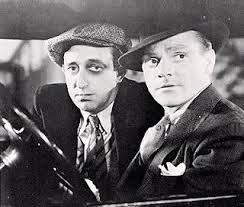 St. Louis Kid starring James Cagney (right)
St. Louis Kid starring James Cagney (right)
Production begins on July 16, 1934
Cagney plays Eddie Kennedy, the pugnacious truck driver who always finds himself in jail and uses a new method of punching guys--using his head (literally)!
Kenndy (Cagney) gets embroiled in a "milk war" between a trucking company and striking dairymen - a topical subject of the time. The trucking company is determined to maintain its milk shipments even though the dairymen are on strike. When a dairy worker is murdered, Cagney is accused of the crime and must find the real killer to clear himself. He also must rescue his kidnapped girlfriend (Patricia Ellis).

 St. Louis Kid starring James Cagney (right)
St. Louis Kid starring James Cagney (right)Production begins on July 16, 1934
Cagney plays Eddie Kennedy, the pugnacious truck driver who always finds himself in jail and uses a new method of punching guys--using his head (literally)!
Kenndy (Cagney) gets embroiled in a "milk war" between a trucking company and striking dairymen - a topical subject of the time. The trucking company is determined to maintain its milk shipments even though the dairymen are on strike. When a dairy worker is murdered, Cagney is accused of the crime and must find the real killer to clear himself. He also must rescue his kidnapped girlfriend (Patricia Ellis).
Published on July 16, 2012 04:45
July 15, 2012
Sunday, July 15, 1934
Went to church this a.m. Went down to Mart's for dinner and supper. Rita Mae wasn't there.
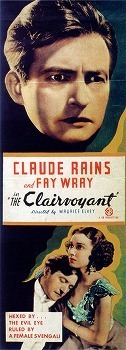
Released July 15, 1934The Clairvoyant (US title: The Evil Mind) is a 1934 drama film made in the UK, starring Claude Rains, Fay Wray, and Jane Baxter, directed by Maurice Elvey, and based on the novel of the same name by Ernst Lothar.


Released July 15, 1934The Clairvoyant (US title: The Evil Mind) is a 1934 drama film made in the UK, starring Claude Rains, Fay Wray, and Jane Baxter, directed by Maurice Elvey, and based on the novel of the same name by Ernst Lothar.
Published on July 15, 2012 04:45
July 14, 2012
Saturday, July 14, 1934
I didn't do much today. This evening Mart's had fish here. Joe and Minnie came in.
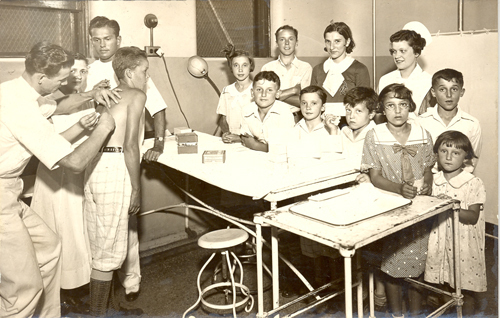 July 14, 1934 - Dog Bite Victims Receive Pasteur Treatment
July 14, 1934 - Dog Bite Victims Receive Pasteur Treatment
Scranton, PA: One of thirteen other dog bite victims, most of them children, receiving an inoculation of the anti-rabies serum, which is being furnished by the city health department. These thirteen victims were all bitten by dog from St.Ann Street in West Scranton.

 July 14, 1934 - Dog Bite Victims Receive Pasteur Treatment
July 14, 1934 - Dog Bite Victims Receive Pasteur TreatmentScranton, PA: One of thirteen other dog bite victims, most of them children, receiving an inoculation of the anti-rabies serum, which is being furnished by the city health department. These thirteen victims were all bitten by dog from St.Ann Street in West Scranton.
Published on July 14, 2012 04:45
July 13, 2012
Friday, July 13, 1934
Rained. We went over to the ice cream social at Marie's. It hailed. I went home with Gladys.
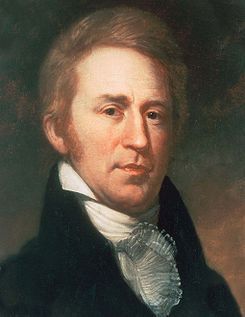 William Clark (August 1, 1770 – September 1, 1838)
William Clark (August 1, 1770 – September 1, 1838)
An American explorer, soldier, Indian agent, and territorial governor,
Clark was a native of Virginia. He grew up in prestatehood Kentucky before later settling in what became the state of Missouri. He was also a planter and slaveholder.
Aong with Meriwether Lewis, Clark led the Lewis and Clark Expedition of 1803 to 1806 across the Louisiana Purchase to the Pacific Ocean, and claimed the Pacific Northwest for the United States. Before the expedition, he served in a militia and the United States Army. Afterward, he served in a militia and as governor of the Missouri Territory. From 1822 until his death in 1838, he served as Superintendent of Indian Affairs.
Clark is buried in St. Louis, in the Bellefontaine Cemetery, where a 35-foot (11 m) gray granite obelisk was erected to mark his grave. The cemetery has been designated a National Historic Landmark.

 William Clark (August 1, 1770 – September 1, 1838)
William Clark (August 1, 1770 – September 1, 1838)An American explorer, soldier, Indian agent, and territorial governor,
Clark was a native of Virginia. He grew up in prestatehood Kentucky before later settling in what became the state of Missouri. He was also a planter and slaveholder.
Aong with Meriwether Lewis, Clark led the Lewis and Clark Expedition of 1803 to 1806 across the Louisiana Purchase to the Pacific Ocean, and claimed the Pacific Northwest for the United States. Before the expedition, he served in a militia and the United States Army. Afterward, he served in a militia and as governor of the Missouri Territory. From 1822 until his death in 1838, he served as Superintendent of Indian Affairs.
Clark is buried in St. Louis, in the Bellefontaine Cemetery, where a 35-foot (11 m) gray granite obelisk was erected to mark his grave. The cemetery has been designated a National Historic Landmark.
Published on July 13, 2012 04:45
July 12, 2012
Thursday, July 12, 1934
Rita Mae came down today. Then Rita Mae and Ruby and I went down to Joe's.
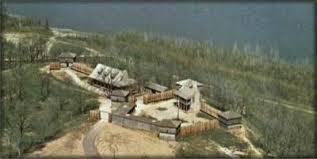 Fort Osage, Missouri
Fort Osage, Missouri
During the Lewis and Clark Expedition, William Clark identified a spot
on the Missouri River which he felt would make an ideal location for a
fort. After the Expedition he returned to this spot in 1808 and constructed
what would later become Fort Osage. The fort served as a strategic trading post and military outpost and garrison until it was abandoned in the mid-1820s.
Located in Sibley, Missouri, the fort today is operated by Jackson County
Parks and Recreation with a professional staff. The Fort Osage
Education Center opened in 2007 and features state-of-the-art exhibits,
classrooms, auditorium, special exhibit spaces and a gift shop.

 Fort Osage, Missouri
Fort Osage, MissouriDuring the Lewis and Clark Expedition, William Clark identified a spot
on the Missouri River which he felt would make an ideal location for a
fort. After the Expedition he returned to this spot in 1808 and constructed
what would later become Fort Osage. The fort served as a strategic trading post and military outpost and garrison until it was abandoned in the mid-1820s.
Located in Sibley, Missouri, the fort today is operated by Jackson County
Parks and Recreation with a professional staff. The Fort Osage
Education Center opened in 2007 and features state-of-the-art exhibits,
classrooms, auditorium, special exhibit spaces and a gift shop.
Published on July 12, 2012 04:45
July 11, 2012
Wednesday, July 11, 1934
Daddy went fishing. Went down to Joe's. Ruby came back with me and spent the night. Rita Mae was up and bit and Gladys's were here.
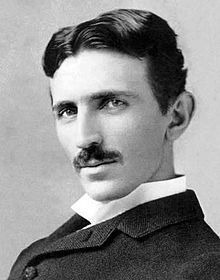 Nikola Tesla (10 July 1856 – 7 January 1943)
Nikola Tesla (10 July 1856 – 7 January 1943)
Nikola Tesla, father of modern methods of generation and distribution of electrical energy, announced a new invention, or inventions, which he said, he considered the most important of the 700 made by him so far.
He has perfected a method and apparatus, Dr. Tesla said, which will send concentrated beams of particles through the free air, of such tremendous energy that they will bring down a fleet of 10,000 enemy airplanes at a distance of 250 miles from a defending nation's border and will cause armies of millions to drop dead in their tracks.
This "death-beam," Dr. Tesla said, will operate silently but effectively at distances "as far as a telescope could see an object on the ground and as far as the curvature of the earth would permit it." It will be invisible and will leave no marks behind it beyond its evidence of destruction.
An army of 1,000,000 dead, annihilated in an instant, he said, would not reveal even under the most powerful microscope just what catastrophe had caused its destruction.
But while it will make every nation safe against any attack by a would-be invader, Dr. Tesla added, the death-beam by its nature could not be employed similarly as a weapon for offense. For this death-beam, he explained, could be generated only from large, stationary and immovable power plants, stationed in the manner of oldtime forts at various strategic distances from each country's border. An exception, however, he added, must be made in the case of battleships, which, he said, would be able to equip themselves with smaller plants for generating the death-beam, with enough power to destroy any airplane approaching for attack from the air.
The production of the death-beam, Dr. Tesla said, involves four new inventions, which have not been announced by him. The scientific details of these inventions are to be given out by him before the proper scientific bodies in the near future.

 Nikola Tesla (10 July 1856 – 7 January 1943)
Nikola Tesla (10 July 1856 – 7 January 1943)Nikola Tesla, father of modern methods of generation and distribution of electrical energy, announced a new invention, or inventions, which he said, he considered the most important of the 700 made by him so far.
He has perfected a method and apparatus, Dr. Tesla said, which will send concentrated beams of particles through the free air, of such tremendous energy that they will bring down a fleet of 10,000 enemy airplanes at a distance of 250 miles from a defending nation's border and will cause armies of millions to drop dead in their tracks.
This "death-beam," Dr. Tesla said, will operate silently but effectively at distances "as far as a telescope could see an object on the ground and as far as the curvature of the earth would permit it." It will be invisible and will leave no marks behind it beyond its evidence of destruction.
An army of 1,000,000 dead, annihilated in an instant, he said, would not reveal even under the most powerful microscope just what catastrophe had caused its destruction.
But while it will make every nation safe against any attack by a would-be invader, Dr. Tesla added, the death-beam by its nature could not be employed similarly as a weapon for offense. For this death-beam, he explained, could be generated only from large, stationary and immovable power plants, stationed in the manner of oldtime forts at various strategic distances from each country's border. An exception, however, he added, must be made in the case of battleships, which, he said, would be able to equip themselves with smaller plants for generating the death-beam, with enough power to destroy any airplane approaching for attack from the air.
The production of the death-beam, Dr. Tesla said, involves four new inventions, which have not been announced by him. The scientific details of these inventions are to be given out by him before the proper scientific bodies in the near future.
Published on July 11, 2012 04:45



